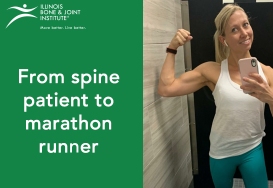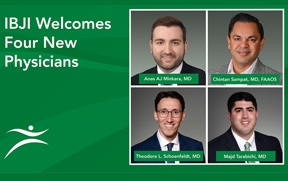The symptoms of a thoracic disc herniation will appear depending on the location of the disc herniation either extruding in a central, sideways, or centro-lateral direction. Getting your back pain diagnosed is critical in getting the correct treatment for thoracic pain. With thoracic herniated disc there is pain which may be localized to the upper back or radiate down a single nerve root.
Typical symptoms particular to each location includes:
A central disc protrusion puts immense pressure on the spinal cord and causes upper back pain and/or myelopathy(spinal cord dysfunction). Depending on the size of the herniated disc there is stress on the already restricted space around the spinal cord in the thoracic spine, which affects the related nerve function. The symptoms show up as numbness, difficulty walking and maintaining balance, weakness in the lower extremities, or bladder dysfunction and in severe cases, there can be paralysis from the waist down.
Lateral Disc Herniation extrudes to the side and the herniated disc impinges on the nerve root at that level of the spine, causing radiating chest wall or abdominal pain.
Centro-lateral Disc Herniation shows symptoms of upper back pain, radiating pain, or myelopathy.
Treatments for Thoracic Herniated Discs
A combination of non-surgical treatments is to be followed for symptoms of a thoracic herniated disc:
Rest is recommended for one or two days followed by activity modification wherein activities that worsens the thoracic back pain is eliminated. The patient can return to activity depending on tolerance for the activity.
Analgesic medications may be taken to help deal with the thoracic back pain. Narcotic pain medication will only be prescribed to treat serious upper back pain for a short time but with mild or moderate thoracic back pain, an OTC acetaminophen should help.
To help reduce inflammation in the herniated disc use of Anti-inflammatory medications (NSAIDs or oral steroids can be used.
If pain persists anti-inflammatory injections, such as an epidural steroid injection may be prescribed by the doctor.
Ice therapy can be applied to the painful area for 15–20 minutes at a time.
Alternative therapy like manual manipulation through chiropractor or osteopath may be tried.
Core strengthening and stabilizing exercises are useful for long term rehabilitation.
Activity levels are progressively increased gradually over a 6 to 12 week period as symptoms of thoracic pain improve.
Thoracic Surgery Options
Thoracic herniated disc surgery is recommended only for extremely severe cases of myelopathy, with progressive weakness in lower extremities, neurological insufficiency and intolerable pain that cannot be helped with non-surgical treatments.
Historically, thoracic surgery called a decompression was used to take the pressure off the spinal cord or nerve root, performed in a laminectomy. Lately for central and centro-lateral herniations, an open thoracotomy may be performed using a front approach to the spine through the chest cavity. This is generally done using minimally invasive VATS (Video Assisted Thoracic Surgery) technique of tiny incisions, small scopes and a video screen for help. While Lateral herniated discs are operated from behind and the side known as a costotransversectomy, where the rib is removed and a small bone is attached to the spine to allow the surgeon access to the inner disc space.
The Illinois Bone & Joint Institute has more than 90 orthopedic physicians, and 20 locations throughout Chicago. We’re here to help you move better so you can live better.




